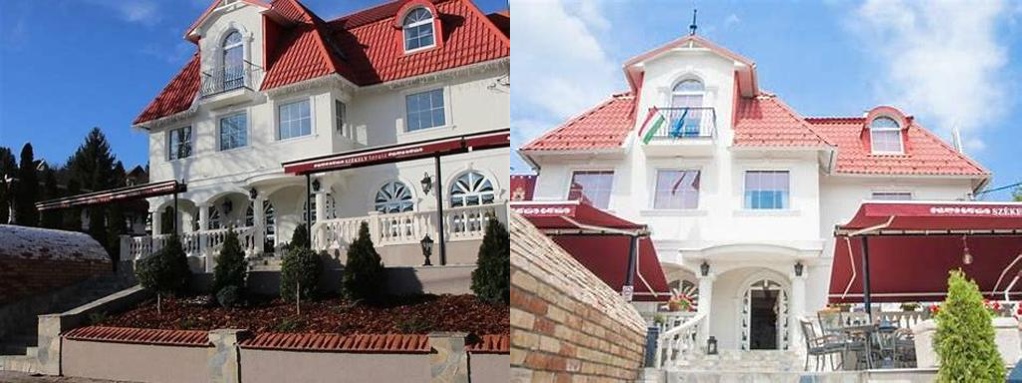
Bükk-kúria—the name rolls off the tongue with a certain old-world elegance. Nestled on the gentle slopes at the fringe of Miskolc, Hungary’s third largest city, this unique mansion is more than just a photogenic stop on a traveler’s itinerary. You’d be forgiven if, at first glance, you think “kúria” is just another grand historic house. But there’s a certain strange magic here, a rhythm to its lawns and walls, tied to the larger story of the Bükk Mountains and how industry, landscape, and cultural memory interlock in this region.
In tracing the story of Bükk-kúria, we find ourselves wandering through time. The mansion’s very origins are interwoven with the industrial revolutions that shaped Northern Hungary in the late 1800s. It was built in 1890 by the enterprising Forgách family, whose vision was not only for a noble residence but for a place that integrated function with beauty, set amid the grandeur of the mountains. Unlike the opulent, sometimes ostentatious palaces you see elsewhere in Europe, Bükk-kúria speaks softly. Its symmetrical, U-shaped structure wraps around a courtyard open to the sun, and its facade—simple, stately, with creamy walls—draws the eye skyward, hinting at aspirations larger than mere comfort.
Walking up the tree-lined drive, you can feel what the family must have imagined: deer grazing beneath the morning mist, the far-off clang of mining equipment echoing through the hills, and in the evenings, the laughter of guests drifting through wine-scented air. The eclectic mix of architectural motifs throughout the mansion speaks to the ever-changing tastes and rich layers of Hungarian aristocratic life. Indoors, you’ll find intricate woodwork, a grand staircase poised for dramatic entrances, and understated stained glass that frames views of the rolling Bükk National Park landscape—reminding you that nature is never far away here.
But the history of Bükk-kúria is not static; the walls have known times of both glamour and hardship. During the turbulence of the twentieth century—the World Wars, shifting governments, land reforms—the mansion witnessed sudden transformations. There are whispered stories that, during World War II, officers were quartered in these rooms, their boots echoing down corridors lined with portraits of long-gone Forgáchs. After nationalization in the wake of the war, the mansion adapted again—becoming, variously, a sanatorium, a school, and offices for forestry management. With every use, a new layer was added, making every stone and stair a silent witness to social change in the region.
What makes Bükk-kúria a rare find for the curious traveler is the blend of elegant architecture, lush setting, and unhurried isolation. You could easily spend a lazy afternoon meandering through its parklands, a green refuge meticulously landscaped at the turn of the twentieth century. Today, mighty chestnut and beech trees stand sentinel, while patches of wildflowers hint at the semi-wild pastures that used to surround the estate. If you’re lucky, you may spot a red squirrel darting up a trunk or hear a nightingale in the distance. You can almost sense what the Forgách children must have felt—racing through the underbrush, their laughter tangled with birdsong.
Inside, there are traces of restoration efforts, not the slick museum renovations you might find in a major capital, but careful, loving preservation by people who know the value of a place with roots. Many rooms still exude a faint air of faded grandeur—original parquet flooring, a delicate frieze, creaking yet robust doors—reminding visitors that these materials were laid by artisans over a century ago. That said, new life is steadily returning, too. Periodic events—from local art exhibitions to traditional music evenings—bring fresh stories and energy, and give visitors an authentic glimpse of Hungarian cultural life.
Bükk-kúria’s location makes it a natural launching point for hiking and exploring the famous caves, forests, and mineral springs of the Bükk Mountains. Many visitors use the mansion as a gentle introduction to the rugged beauty beyond the city, wandering out for a few hours on wooded trails, then returning to picnic in the shade where aristocrats once strolled. Nearby attractions—like the medieval castle of Diósgyőr, or the charming wine cellars of Miskolctapolca—are within easy reach, but the tranquility here is hard to match.
If you’re a traveler seeking authenticity, unhurried charm, and places where history has left its fingerprints but not its constraints, Bükk-kúria in Miskolc provides just such a haven. It’s the kind of destination where, after a half-day spent among the stones, trees, and stories, you leave carrying a sense of the past on your breath—and perhaps, a desire to return and see what stories the old mansion will tell next.





